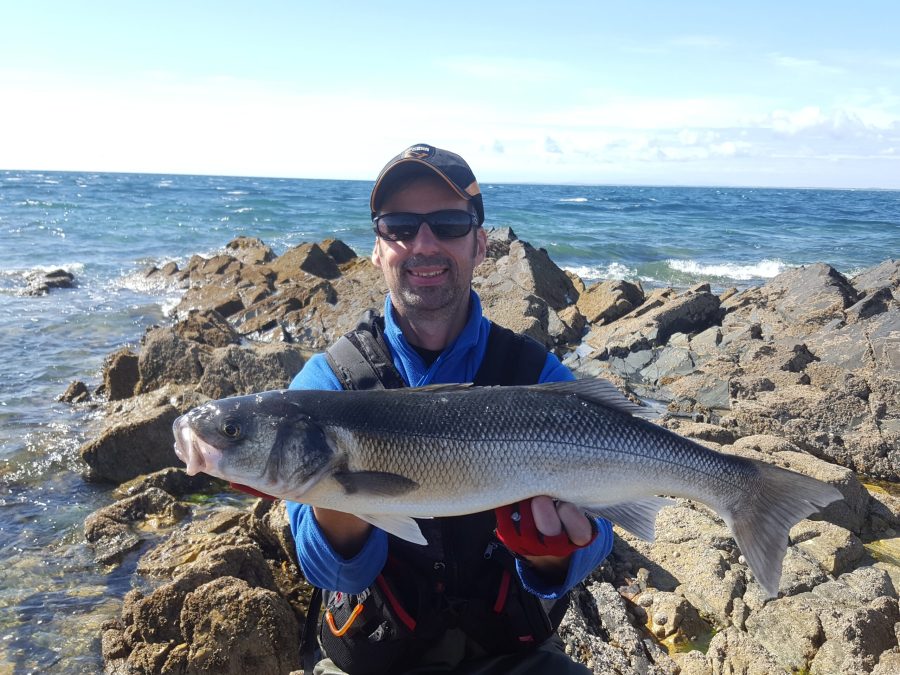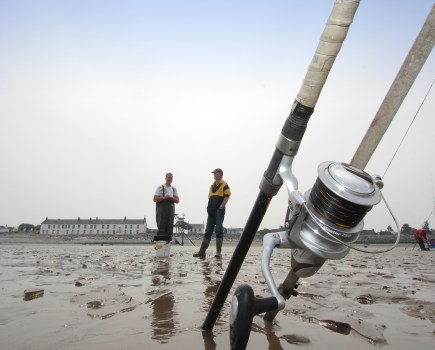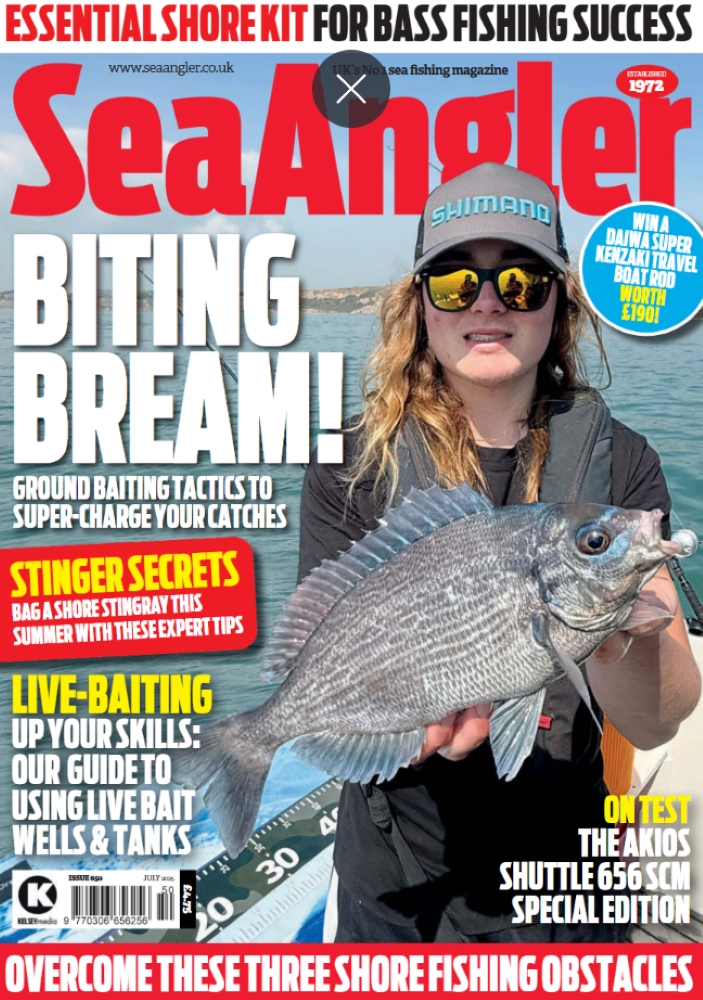How watercraft takes your bass fishing to the next level
Words and photography by Cormac Walsh
There is nothing better than the feeling you get when a good bass slams your lure, particularly when it is an area that you have found yourself by identifying features on the coastline that you think might hold a decent bass or two.
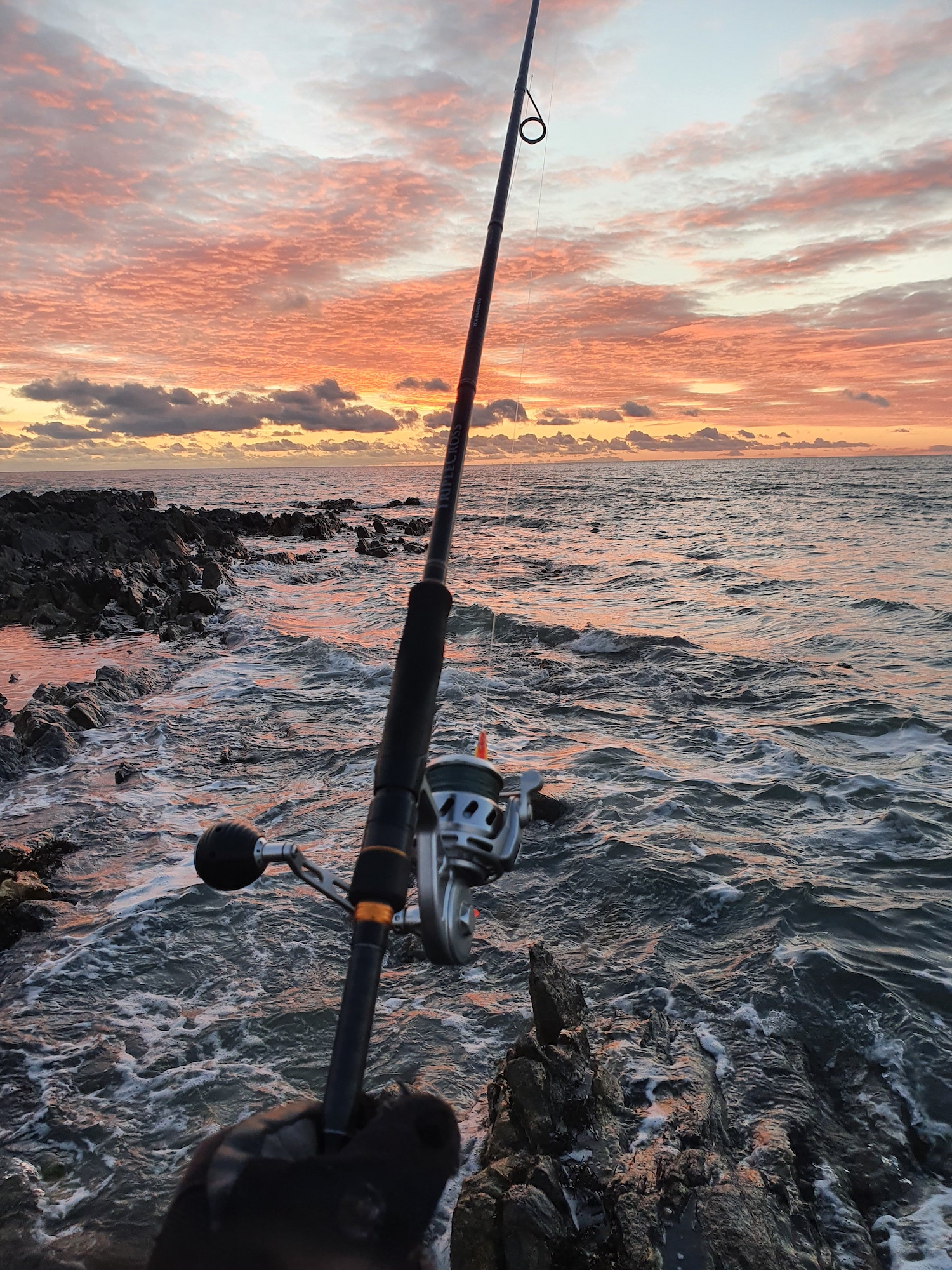
Watercraft is an understanding of the environment you are fishing and an essential skill to develop
The simplicity, practicality and efficiency of lure fishing is very appealing. There is no need for fresh or frozen bait, nor lugging lots of heavy gear across the rocks or miles up a beach. Basically, all you need starting off is a rod, reel, waders, a handful of decent lures, and away you go. With the correct tackle and lures, it is watercraft and weather that are vital elements of taking your bass fishing to the next level.
Watercraft is an understanding of the environment you are fishing and an essential skill to develop. It not only includes studying the water, but also the shoreline, tides, current and the wildlife. The more you learn the more you can use it to your advantage and improve your chances of locating and catching bass.
What can you see in the water? Can you identify, reefs, rocks, sandbars and structure? These are all potential fish-holding areas. Is the water deep or shallow, where are the drop-offs? Try to identify locations where a rocky coastline meets a sandy patch and look for rip tides, those currents running out from the shore. You will get used to spotting these things and utilising them in your fishing trips and ultimately improving your catch rate.
KNOW THE SHORE
Take your binoculars and scan along the shoreline. Look for sandy points jutting out or little deep troughs where the tide has swept away sand close to the shore. Seek out areas where there is fresh water flowing from the land. This can be a small run-off from a field or from a rocky cliff. Identify areas where substantial amounts of debris have washed up because this indicates a current hitting the shoreline at that point. These locations often attract fish. A good giveaway is to watch for other anglers who might be fishing spots regularly at certain times.
Work out how each state of the tide affects the feeding behaviour of fish in the. Find out what direction the current flows when the tide is rising and when falling and how this determines fish movement along the shore. Are the fish there at high tide or low tide or at half tide when the current changes direction in some places?
Notice also how the tide sweeps over sand bars and around points and what effect that can have on feeding fish. You should see the little changes in the texture of the water caused by changing currents. Bass love currents and they will not be too far away.
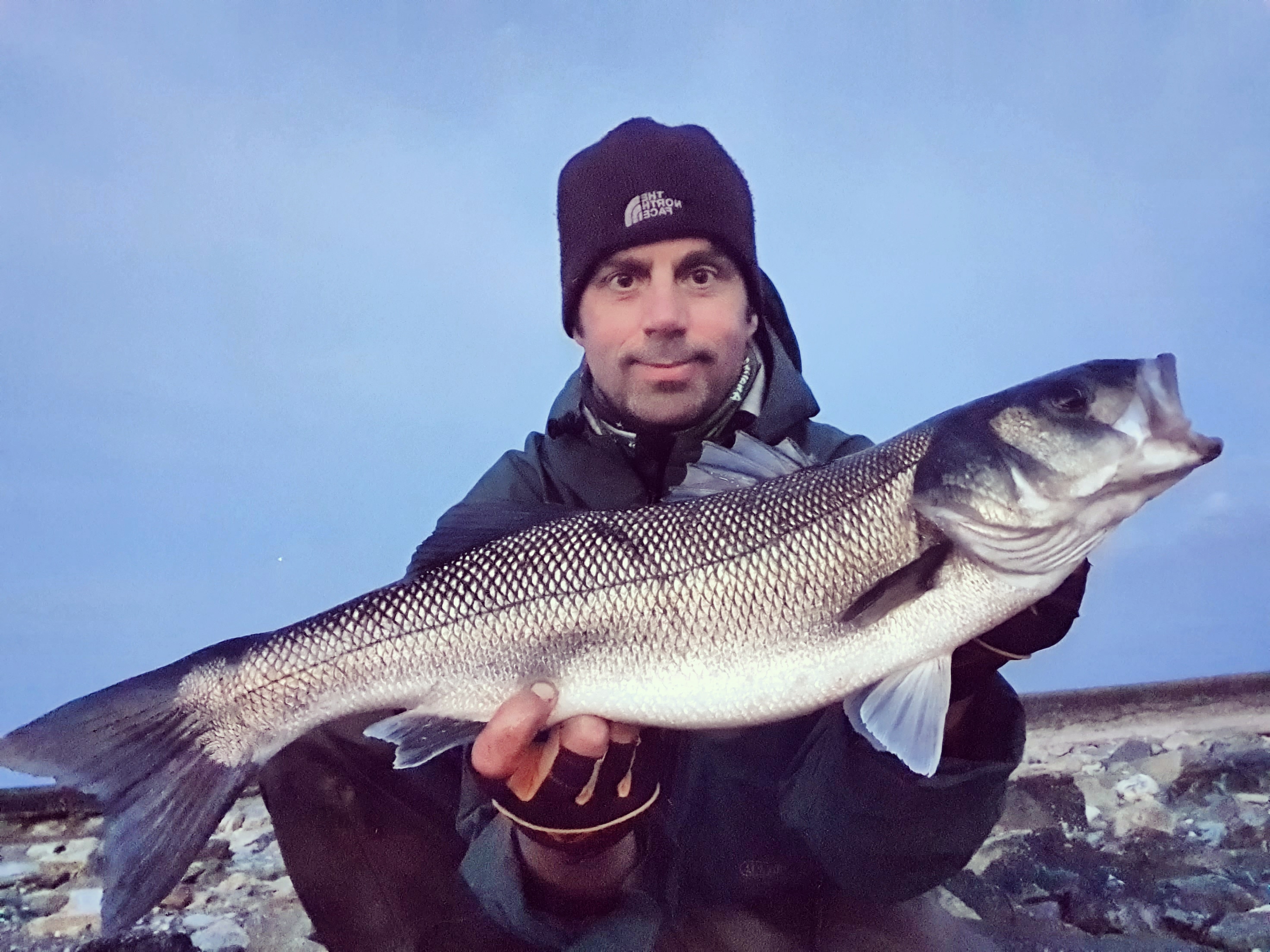
Finding a new venue can lead to superb results
Look out for birds on the water. They do not necessarily have to be diving or feeding, but sometimes a group of birds just sitting on the water near the shore is a sign that fish are nearby. Look out for other wildlife too. I share some of my best fishing spots with seals and otters. If there are otters living nearby you can be sure there are fish not far away. Scan the bays and further offshore for feeding dolphins because they can drive sprats or mackerel ashore and the bass are never far behind.
I love to scout the coast looking for potential new spots and I tend to do this nearly as much as fishing these days, especially if the weather is not great for fishing. The coastline is constantly changing and therefore so will the feeding habits of fish. I stumbled on a spot by doing exactly that. Walking a beach at low tide, I found an area of the shoreline where the rough ground met a clean sandy bottom. Bass love this type of area. I tried it at dusk about an hour before high tide dusk and I found it be holding a few fish. This location held fish nearly constantly in or around that tide for months and I had more than 100 bass from it throughout the year.
Read next Know Your Fish: Bass
WEATHER KNOWLEDGE
The weather is the single most important factor in our fishing. However just because the weather is bad does not mean you cannot fish. When you get used to studying the weather, you can identify what venues do well in different weather patterns. You will discover those beaches that will be sheltered or what part of the coastline will have some clear water.
Luckily, there are lots of tools at our disposal online these days that can assist in planning your next fishing trip. These include various resources including moon phase, weather conditions, live cameras and buoy data.
If possible, I try to plan my fishing around spring tides. These are the ones that occur on a new or full moon. During these phases, tides rise higher and fall back further. Fish activity increases around these big tides. Download a good moon phase app that will show you all stages of the moon throughout the year and start planning your sessions around these stages. You are sure to see the difference.
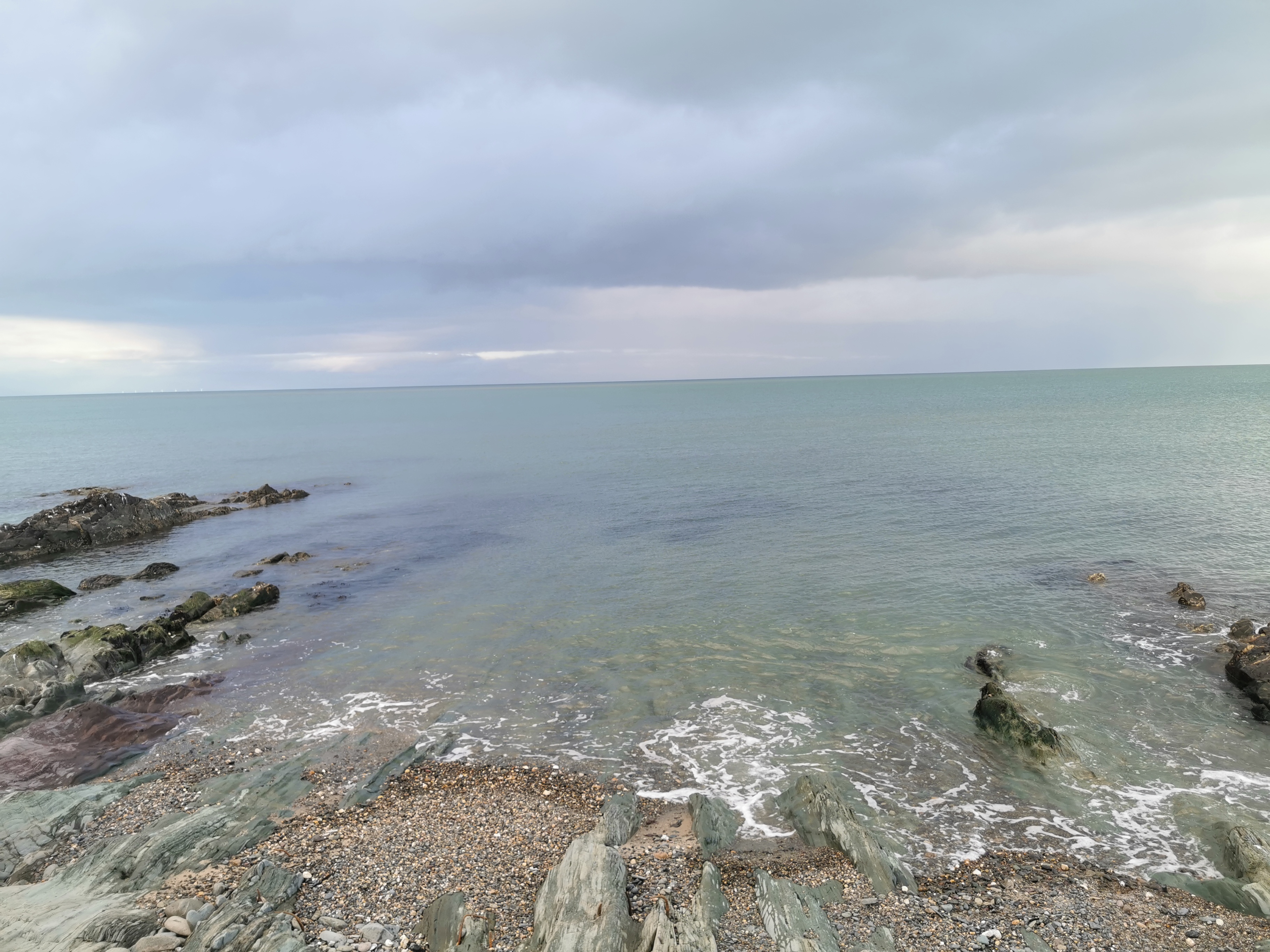
Fish activity increases around spring tides
The next step is to check the weather. If it looks good, then examine your tide tables and select a venue that will suit a particular tide time. If all that is matching nicely then you are on the way to a good lure fishing session.
There are some fantastic free tools online to gain weather and sea condition data. For weather forecasts, try Windy, XC Weather and Accuweather. National weather forecasts will have an app available too. Nowadays the most up to date weather conditions are available at the touch of a button.
Live cameras streams are excellent for obtaining weather data. There are a large number around the UK and Ireland that provide a live stream to a coastal location just by clicking on a link. These provide a real time view of the sea conditions in a particular place, which can save a lot of time unnecessary travelling to a venue only to find the conditions are unsuitable for lure fishing. Some useful links are thebeachguide.co.uk, skylinewebcams.com, webcamtaxi.com and hookheritage.ie.
Another excellent tool for gathering information on weather and sea conditions is buoy data. Around the coast of the UK and Ireland we have fixed buoys that transmit regular specific weather and water conditions data in real time. They provide useful information such as windspeed, wind direction, water temperature, air temperature and swell height for a particular area. This data can be extremely useful to anglers planning fishing trips.
Try the National Data Buoy Centre UK website: www.ndbc.noaa.gov/maps/United_Kingdom.shtml.
Have a look around online yourself because you will be surprised what useful tools are out there to help us plan our fishing trips.
Very quickly this planning and preparation becomes second nature. You do it without even realising and soon you are fishing by intuition. Everything is flowing now. You have cracked the code.
TOP TIPS
- Stay safe, wear a life jacket.
- Keep noise and artificial light to a minimum.
- Learn to know how far you are casting by the feel of the braid peeling off the reel and by the noise of the lure hitting the water.
- Check the lure before each cast for any weed that might be attached to it. Know what speed to retrieve the lure and when to pause it.
- Ensure the reel’s drag is set perfectly before your first cast.
- Land your fish, unhook it, take a picture if you want, measure and weigh it and place it back in the water as safely and efficiently as possible.
TACKLE REQUIREMENTS
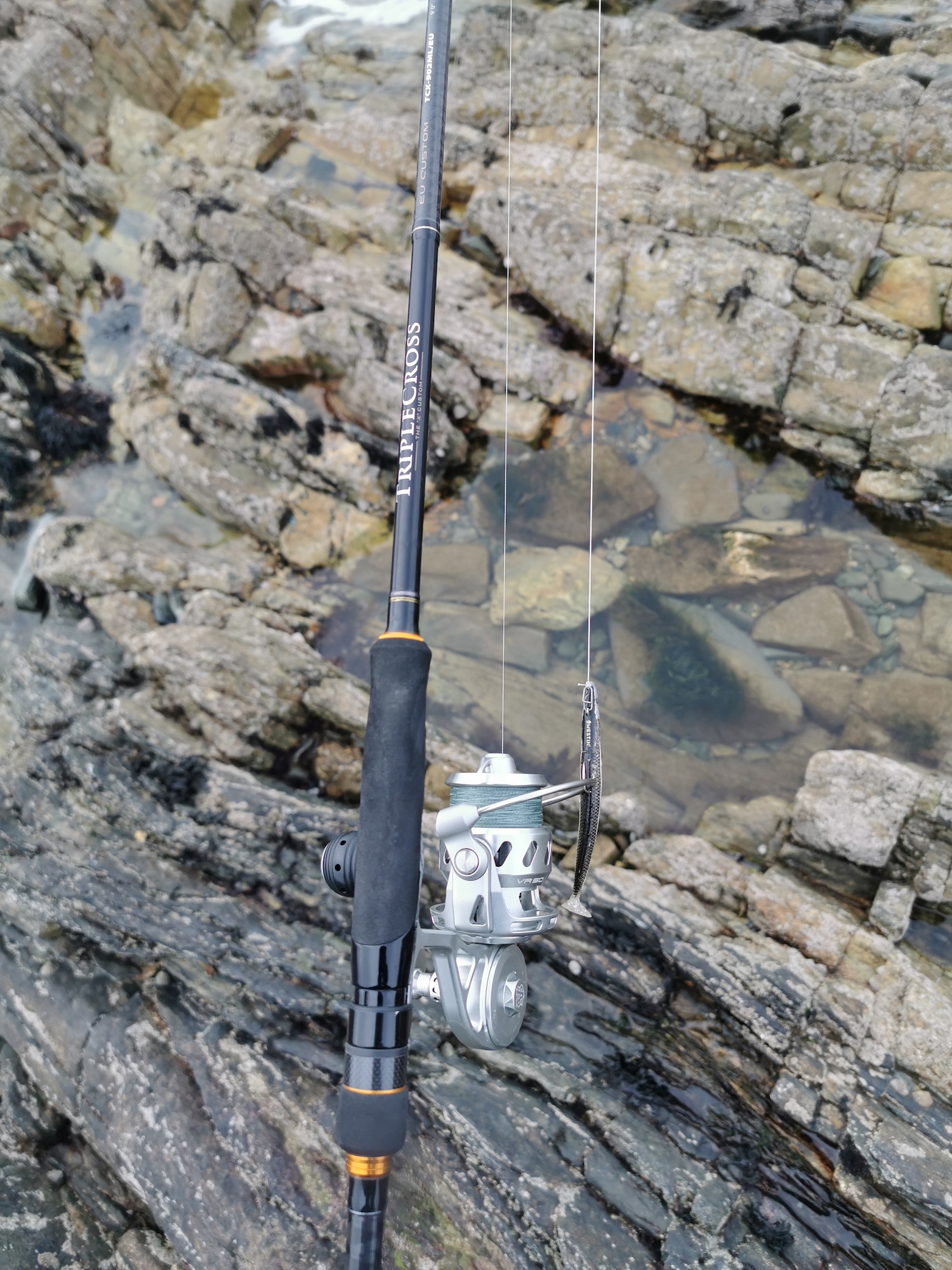
Use a lure rod of 8ft 6in to 9ft 6in long with a 3500 or 4000 size fixed-spool reel
Essential equipment for lure fishing is a rod, reel, braid, leader, lure clips and lures. After that you need the appropriate fishing clothing, lure bags and boxes, along with accessories such as sunglasses, pliers and fish gripper. There is no need to get bogged down with everything at once. Start with the basic items and keep adding as you go
The two most important things to look for when choosing a lure rod are length and casting weight. A lure rod between 8ft 6in and 9ft 6in is ideal. The weight rating should be something like 7-28g or 10-30g.
A 3500 or 4000 size fixed-spool reel is ideal for most lure fishing for bass. The reel should feel light and well-balanced on your rod. Load the reel with braid rather than mono line. I use 30lb braid because it can cope with rocky and weedy ground. Most spools of braid are 100 metres or 150 metres and that is plenty. You will need add some backing (cheap mono) on the reel before adding the braid. Do not overfill the spool and leave a gap between the lip of the spool and the braid; 2mm is a usually a good guide.
The leader is a length of fluorocarbon that ties to the end of your braid. The other end ties on to your lure clip or lure. I use a 20lb fluorocarbon leader. It can be anything from two to four metres long. Learn how to tie a good braid to leader knot. There are some excellent YouTube videos showing how to do this. Finally, you need a quick-change lure clip or mini link to allow you to change your lure without having to tie a knot every time.
Find out about the latest equipment to have in our Tackle section
LURE SELECTION
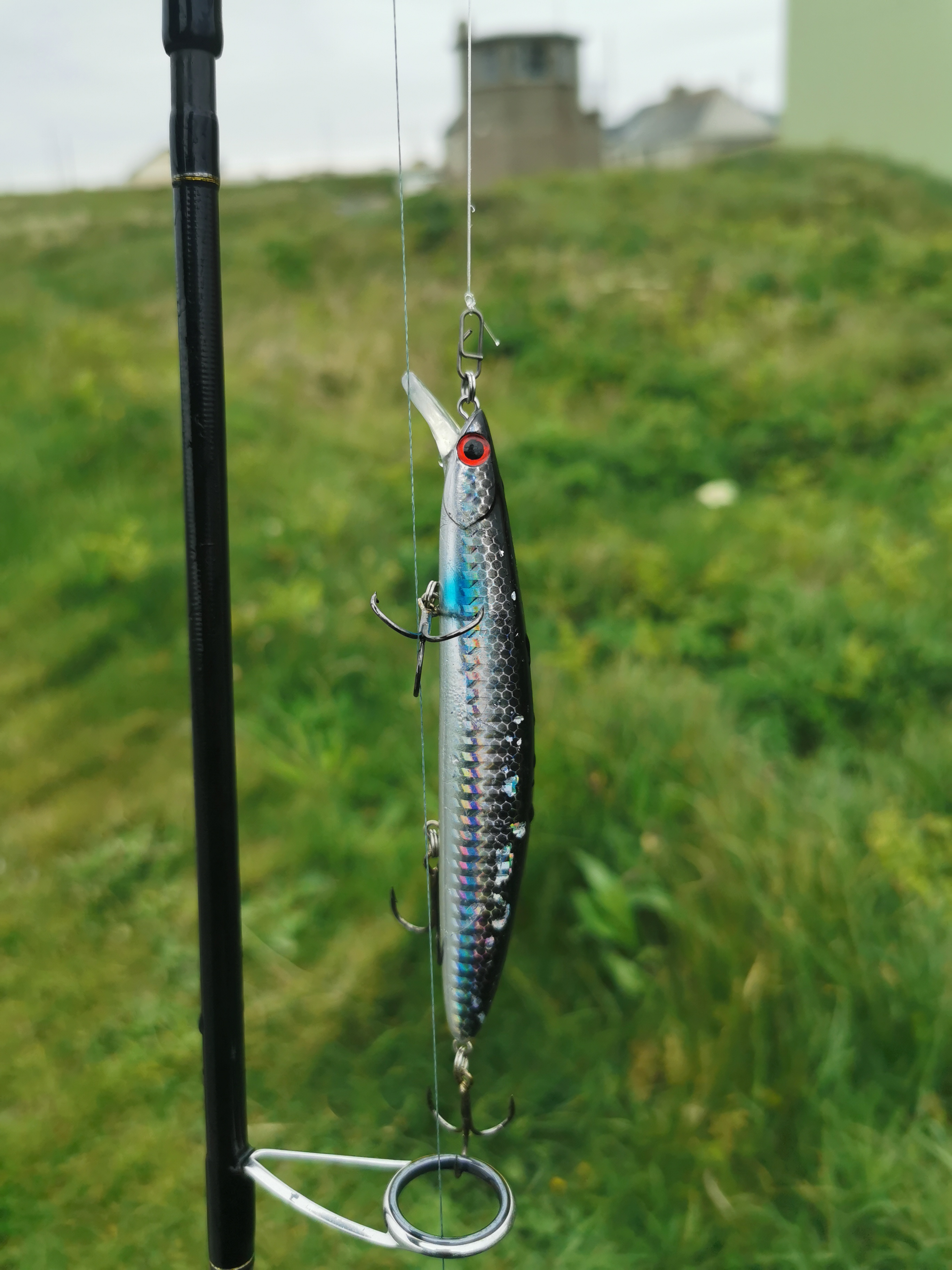
Depth of water determines lure choice
There is a mind-boggling array of lures for bass fishing ranging from shallow diving hard lures to surface lures, soft plastics, rubber eels and metals.
Shallow diving lures are ideal over shallow rocky ground up to three metres deep. All shallow divers have varying dive depths, which are printed on the box.
If the ground is too shallow, sometimes a shallow diving lure is not suitable as it might be catching on the weed. In this situation, use a soft plastic lure rigged with a weedless size 4/0 or 5/0 hook. Rigged weedless means the hook is hidden within the body of the lure to prevent it from snagging on rocks or weed. Soft plastic lures can be used in shallow water. Twist lock hooks are good for soft plastics.
Surface lures are more productive in shallow, calmer water. The most common mistake when surface fishing is retrieving the lure too fast.
Most rubber eels have a rubber body with either a weighted jig head on a hook or the weight is integrated in the body. They are highly effective from sandy beaches and in estuaries. On a sandy beach I will fire the lure out into a surf and slowly retrieve it. In an estuary, I bounce a rubber eel along the bottom or suspend it in the current. They can be effective over rough ground too, but a faster retrieve is necessary to prevent snagging.
Metal lures cast well and are good in the surf. Use them when for extra distance or when a heavier lure is required to cut through a surf.
5 ESSENTIAL ACCESSORIES
- Pliers: Use pliers for cutting braid and unhooking fish.
- Fish grip: A handheld tool with jaws that open and latch on to the bottom lip of a fish, it then locks it in place allowing for better landing, control, unhooking and release of a fish. A fish grip is very handy if you are wading and the fish cannot be beached.
- Head torch: Essential when fishing at night. Get a rechargeable version if you can.
- Sunglasses: Polaroid sunglasses protect your eyes from the sun and give enhanced visibility when looking through water. They also protect you from being hit by a flying lure.
- Binoculars: Use them while fishing or when scouting the coastline. You’ll see things you’ve never noticed before.
Want more helpful guides to fishing? Head to our Tips and Tactics section, or subscribe to Sea Angler magazine

